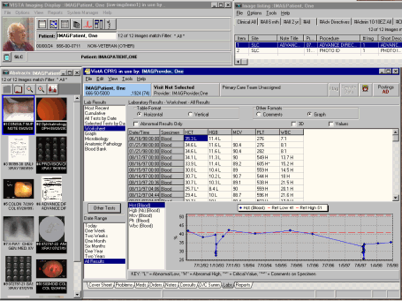Confused? How to make sense of Paperless Medical Records Solutions
 EMR, EHR, PCEHR, eHealth – what’s it all mean?
EMR, EHR, PCEHR, eHealth – what’s it all mean?
When it comes to naming computerised medical record solutions, the common approach, is to give them an acronym, or at the very least get the letter ‘e’ in there somewhere. The result is confusion.
I am frequently in conversations with people who randomly interchange EMR with EHR, eHealth with PCEHR and Paperless Medical Records with Digital Documents. And who can blame them? It’s ambiguous and a conversation like that generally results in a headache.
In this post I hope to shed more light on what the terms all mean and bring it back to plain language.
eHealth
The World Health Organisation takes a very simple and high level view of what eHealth is and, in one sentence, makes it very clear:
E-health is the transfer of health resources and health care by electronic means.
For WHO It encompasses 3 main areas:
- Delivery of Health Information
- Using Information Technology (IT)
- Health Systems Management
I think of eHealth as the embodiment of electronic resources to deliver and manage health care related information.
Simply put, this means that EMR, EHR, PCEHR and paperless medical records solutions are all components of eHealth.
EHR v EMR
Electronic Health Records (EHR) systems are generally designed like typical database applications with lots of text fields and drop down boxes. Before the term EHR became widely adopted we used to call these Patient Admission and billing systems (PAS). Essentially this what they are.
The patient is booked, arrives, gets billed and goes home.
But there’s a big section in the middle of all that where medical professionals have typically relied on paper based Patient Chart. That includes the recording of the specialist's diagnosis and treatment as well as the carers application and account of it all. This is where the traditional paper medical record system comes in to play. EMR is simply an electronic version of a paper medical record.
It’s the electronic version of a patient’s clinical record that specialists and carers use to document the diagnosis and treatment of their patients.
The difference between an EMR and a PAS is that is that most EHR’s claim to contain an EMR as well. But it’s nothing like a traditional patient chart.
 If the electronic medical record is contained in an EHR it may look something like this:
If the electronic medical record is contained in an EHR it may look something like this:
And that’s where the problem starts for patients and carers. The specialist or carer is forced to divert their attention away from the patient while they complete the screen because it’s impossible to type and have a conversation at the same time. The carer is not going to be able to absorb whatever the patient says while they type. It’s not possible.
It’s tantamount to driving a car and talking on your mobile phone. You can’t do both safely.
A paperless medical records system that is designed to emulate the traditional paper patient chart can be of great benefit by maintaining that one on one interaction between carer and patient.
You will still need an EHR to manage the administrative components of the care, but this is typically done by receptionists and administrators who are not involved in the care of the patient.
PCEHR
PCEHR is the Personally Controlled Electronic Health Record. This is different to EMR and EHR as this is designed to be used by the patient. As the patient, you control what goes into it, and who is allowed to access it. Your eHealth record allows you and your doctors, hospitals and other healthcare providers to view and share your health information.
It’s a great idea because it means that all your medical information is kept in the cloud and can be accessed by you anywhere. Say for example you were on holidays in a faraway place and you fell ill and needed to be hospitalised. You could make your PCEHR available to the Hospital and they could quickly be up to date with any condition or allergy you may have. They could read past diagnoses and treatments. It can save time and could save your life.
Go to eHealth.gov.au to find out more or sign up.
Conclusion
I hope that this post makes it a little easier to make sense of the various terms. A simple rule of thumb:
Electronic Health Record (EHR) systems are mostly used by receptionists and administrators to make appointments and bill patients. (Although as mentioned above, modern EHR’s may contain a medical record as well). Some specialist and carers may use them instead of a traditional medical record.
However, Electronic Medical Record (EMR) systems are mostly used by specialists and carers to record the diagnosis and treatment of patients.
PCEHR is your medical record owned and controlled by you.


